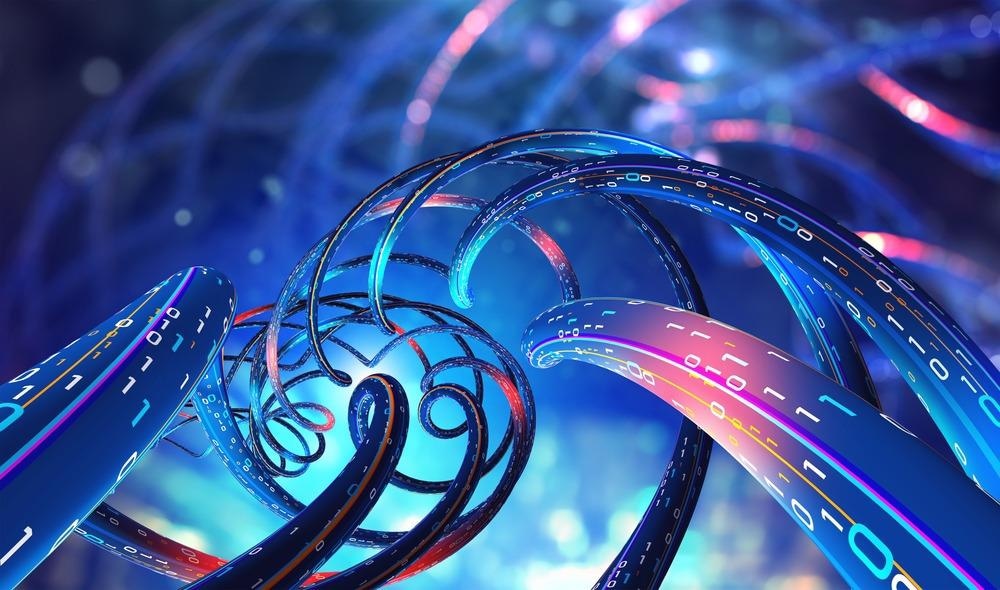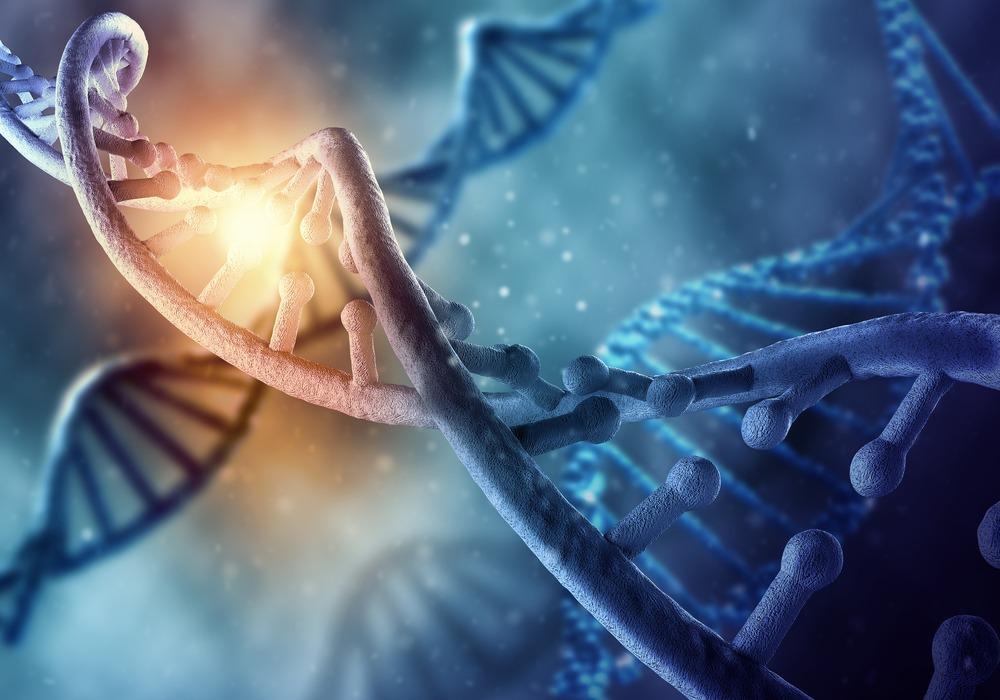Synthetic biology, a field combining principles from engineering and biology, has steadily progressed since its inception. This area of research focuses on designing and constructing biological components for use in various technological applications.1 Over the past decade, synthetic biology has developed into a valuable tool with broad applications across various industries, offering potential advancements in areas such as medicine and manufacturing.2

Image Credit: Yurchanka Siarhei/Shutterstock.com
Advancements in Synthetic Biology
In recent years, progress has been made in synthetic biology. For example, the CRISPR-Cas9 system, which allows for precise genetic modifications, has become more refined and accessible. Researchers have developed improved CRISPR variants with enhanced specificity and reduced off-target effects, expanding its potential applications in medicine and agriculture.3
Emerging tools and techniques have pushed the boundaries of what's possible in synthetic biology. Advancements in DNA synthesis and assembly methods have enabled the creation of larger and more complex genetic circuits. The development of cell-free systems has allowed for rapid prototyping of biological designs outside of living cells, accelerating the design-build-test cycle in synthetic biology research.4
One of the most exciting recent developments is the creation of synthetic cells. In 2019, researchers successfully created a synthetic yeast chromosome, marking a significant step toward building a fully synthetic genome.5
Discover more: What is CRISPR?
Applications of Synthetic Biology
Medicine
Synthetic biology has already been assisting in the advancement of medical research. The rapid development of mRNA vaccines for COVID-19 showcased the power of synthetic biology in responding to global health crises. Beyond vaccines, synthetic biology is being applied to develop new gene therapies, produce personalized treatments for cancer, and create biosensors for early disease detection.6
Agriculture
In agriculture, synthetic biology is addressing challenges related to food security and sustainability. Researchers have used gene editing techniques to develop crops with enhanced nutritional profiles, improved resistance to pests and diseases, and increased tolerance to environmental stresses. Additionally, synthetic biology has been useful in the research and discovery of new pesticides and fertilizers, which are both kinder to local biodiversity and generally safer to use on industrial scales7
Bioenergy and Environment
Synthetic biology is also making crucial contributions to sustainability and the environment. Synthetic biologists are engineering microorganisms to produce advanced biofuels more efficiently, potentially reducing our reliance on fossil fuels. Moreover, synthetic biology is being used to develop biodegradable plastics and create environmental biosensors for detecting pollutants in air, water, and soil.8
Industrial Biotechnology
In the industrial sector, synthetic biology is revolutionizing the production of chemicals, materials, and pharmaceuticals. Companies are using engineered microorganisms to produce complex molecules more sustainably and cost-effectively than traditional chemical synthesis methods. For example, the production of artemisinin, a key antimalarial drug, through synthetic biology has helped stabilize the global supply of this critical medicine.9

Image Credit: ESB Professional/Shutterstock.com
Challenges and Ethical Considerations
As synthetic biology advances, it continues to face significant challenges and ethical considerations. Biosafety and biosecurity remain crucial concerns, with ongoing discussions about the potential risks of engineered organisms escaping controlled environments or being misused.10
The ethical implications of human gene editing have come to the forefront, particularly following the controversial birth of gene-edited babies in China in 2018. This event sparked a global debate on the responsible use of gene-editing technologies in humans and led to calls for stricter international regulations.11
Environmental concerns have also gained attention, with researchers and policymakers discussing the potential ecological impacts of releasing engineered organisms into the environment. As a result, there's a growing emphasis on developing robust containment strategies and conducting thorough risk assessments before field trials or releases.1
Is synthetic biology the next big thing for biopharma?
The Future of Synthetic Biology
Looking ahead, synthetic biology is poised to play an increasingly important role in addressing global challenges. The field is moving towards the creation of more complex synthetic life forms, with the goal of designing entire organisms from scratch. This could lead to the development of microorganisms engineered to clean up pollution, produce valuable compounds, or serve as living sensors.12
Furthermore, machine learning and artificial intelligence are becoming integral to synthetic biology by helping researchers design and optimize biological systems more efficiently. These tools are enabling the prediction of gene function, the design of novel proteins, and the optimization of metabolic pathways.13
In conclusion, synthetic biology has progressed from an emerging field in its early stages of development to a robust technological platform with the potential to transform multiple industries. As advancements in the engineering of biological systems continue, synthetic biology holds significant promise in addressing some of the world’s most critical challenges.1
References
1. National Human Genome Research Institute (2019) Synthetic Biology, Genome.gov. Available at: https://www.genome.gov/about-genomics/policy-issues/Synthetic-Biology.
2. Cameron, D.E., et al. (2014). A brief history of synthetic biology. Nature Reviews Microbiology, 12(5), 381-390. DOI: 10.1038/nrmicro3239
3. Anzalone, A.V., et al. (2020). Search-and-replace genome editing without double-strand breaks or donor DNA. Nature, 576(7785), 149-157. DOI: 10.1038/s41586-019-1711-4
4. Pardee, K., et al. (2016). Rapid, Low-Cost Detection of Zika Virus Using Programmable Biomolecular Components. Cell, 165(5), 1255-1266. DOI: 10.1016/j.cell.2016.04.059
5. Pretorius, I.S., & Boeke, J.D. (2018). Yeast 2.0—connecting the dots in the construction of the world's first functional synthetic eukaryotic genome. FEMS Yeast Research, 18(4), foy032. DOI: 10.1093/femsyr/foy032
6. Pardi, N., et al. (2018). mRNA vaccines - a new era in vaccinology. Nature Reviews Drug Discovery, 17(4), 261-279. DOI: 10.1038/nrd.2017.243
7. Liu, X., et al. (2019). CRISPR/Cas9-mediated multiplex gene editing in plants. Methods, 164-165, 32-39. DOI: 10.1016/j.ymeth.2019.03.027
8. Liao, J.C., et al. (2016). Fuelling the future: microbial engineering for the production of sustainable biofuels. Nature Reviews Microbiology, 14(5), 288-304. DOI: 10.1038/nrmicro.2016.32
9. Paddon, C.J., & Keasling, J.D. (2014). Semi-synthetic artemisinin: a model for the use of synthetic biology in pharmaceutical development. Nature Reviews Microbiology, 12(5), 355-367. DOI: 10.1038/nrmicro3240
10. Trump, B.D., et al. (2020). Synthetic biology 2020–2030: six commercially-available products that are changing our world. IEEE Engineering Management Review, 48(1), 234-239. DOI: 10.1109/EMR.2020.2975007
11. Cyranoski, D. (2019). The CRISPR-baby scandal: what's next for human gene-editing. Nature, 566(7745), 440-442. DOI: 10.1038/d41586-019-00673-1
12. Hutchison, C.A., et al. (2016). Design and synthesis of a minimal bacterial genome. Science, 351(6280), aad6253. DOI: 10.1126/science.aad6253
13. Radivojević, T., et al. (2020). A machine learning Automated Recommendation Tool for synthetic biology. Nature Communications, 11(1), 1-14. DOI: 10.1038/s41467-020-18008-4
Further Reading
Last Updated: Oct 16, 2024